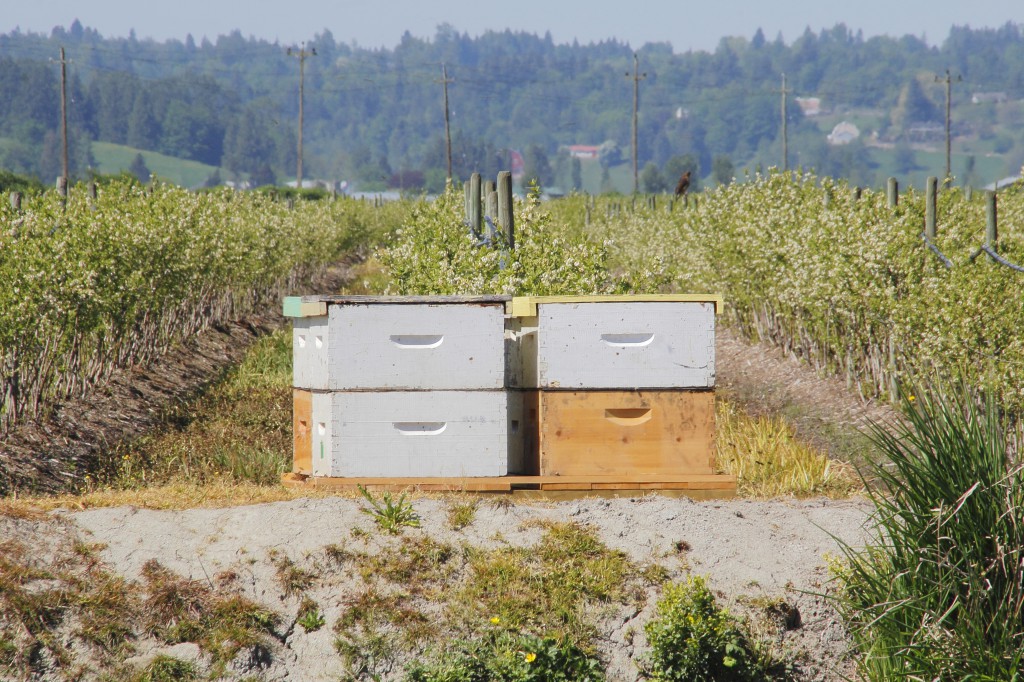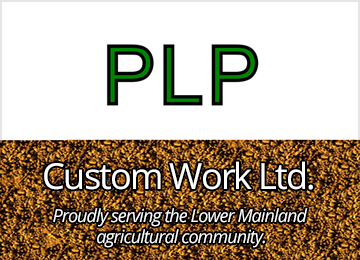Cate Pedersen
Without the actions of pollinators, two thirds of all flowering plants, and one third of the world’s food would disappear, but more investigation and education is needed to effectively support bee colonies and understand the complex issues that threaten bee health.
Jeff Lee, owner of Honey Bee Zen Apiaries, and Vice President of the British Columbia Honey Producers’ Association (BCHPA), and his wife Amanda began their beekeeping adventure with a couple of hives. Their company has recently grown to over 500 hives with the purchase of Swan Valley Honey in Creston, BC.
“We chose, as urban beekeepers, to turn our passion into a business,” Lee states.
Stories around the use of neonicotinoid pesticides (neonics) being harmful to honeybees flood media channels, but Lee points out that all bee populations are impacted by colony health, fungicides, loss of forage, and many other things that synergistically affect the health of not just managed bees, like honeybees, but also native pollinators like bumblebees, miner, mason, and sweat bees.
“None of these have champions like a beekeeper,” Lee points out. “If my bees get into trouble I can treat them and take care of them, but to my mind the native pollinators are more at risk. They fly under the radar of most farmers who don’t pay attention [to their importance].”
Lee believes that whether you are a farmer, beekeeper or backyard gardener, a responsible integrative approach to pest management is the way to go.
“If we expect to feed the world’s population, we have to treat for certain pests, but that means careful application and responsible chemical use,” Lee stresses.
“In our company we tend not to use the harshest chemicals. For example, we use mechanical methods and what we call drone brood as a way of trapping mites. If we have to treat our bees for mites, we begin with formic acid and acyclic acids, and wait to use synthetic chemicals to the last. We also use pesticides, so as beekeepers we need to be cognizant and part of that discussion. From a neonic point of view, I see the problems being misinformation and misapplication.”

In 2015, Lee discovered a bee kill in a farmer’s field where he was told there would be no spraying—four of his hives had died, and another 18 hives were lost during the winter.
“Our agreement was he would let us know ahead of time so we could remove the hives—I need an opportunity to remove my hives during the evening when the bees aren’t flying—before spraying is done.”
Lee called the provincial apiculturists and they took samples and suggested they contact the federal Pest Management Regulatory Agency (PMRA) which controls pesticides and applications. They came out and tested and examined the grower’s spray schedule and product labelling etc., and concluded Lee’s hives had been killed by a neonicotinoid called ClutchTM 50. Lee notes it was the only reported neonicotinoid kill in BC that year.
“We think we lost around $10,000 – $12,000 in bees, wax and honey etc. It was a very destructive situation for all,” says Lee. “We have always taken the position that beekeeping with farmers was a conversation—we should have an understanding of what their needs are and they should understand what their responsibilities are to our bees. If we felt we weren’t comfortable with that relationship, then we simply wouldn’t rent our bees to that farmer. We have to know that they are respectful of our bees, and we understand they sometimes require applications to protect their investments.”
Lee imports his bee stock from Chile, New Zealand and Australia. The border was closed to US bees in 1987 as a result of concerns over a number of complex disease issues.
It costs Lee about $200-250 to purchase a package of bees, and another $60 to feed them up to pollination strength. Lee receives about $100 on average per hive from renting pollination services to growers. The gain from blueberry pollinators is the money from the rental, plus honey profits. But, if the hives are killed, the grower doesn’t get his crops pollinated, and the beekeeper doesn’t get his honey crop. Money is only made if the hives live two to three years.
“The economics to beekeeping are frail,” says Lee. “That’s why relationships with farmers are so important and contracts are so important.”
“In BC, we have roughly 45,000 registered colonies, and of those, 25,000 are available for pollination,” states Lee, “but the province needs 45-65,000 colonies to cover all the blueberries that are in production. To supply enough pollinators, Alberta beekeepers winter their bees here to pollinate the berries, then the bees are packed up and shipped back to Alberta to pollinate canola crops. Think about the impact of this—we depend upon Alberta for pollination, so we could be on a tipping point here. If we don’t get this issue under control, there will be fewer people willing to put their bees here.”
The BCHPA is working closely with berry growers in the Fraser Valley to study bees in the region and learn more about how to help pollinators stay strong and productive.
The BCHPA, along with the BC Blueberry Council and the BC Agriculture Council, are closely investigating a concern that beekeepers have around the use of fungicides on blueberries. The effect of neonicotinoids might not be as serious, they think, as something like fungicides. The concern is that growers prophylactically spray fungicide, and there is growing evidence that fungicides are not benign to honeybees, but actually have a cumulative effect.
“We call it sub-lethal effects,” Lee explains, “where it might not kill them outright, but will over time affect colony health, strength of the brood, longevity of the queen, and the ability to survive through the winter.”
Whether harm is inflicted through neonicotinoids or fungicides, Lee does not believe in outright bans, because alternatives could be more damaging to the environment and less effective at pest management.

“But it’s not just harm from chemicals,” Lee insists, “it’s loss of forage. Dandelions, for instance, are a huge source of pollen and nectar for bees in the spring. And we use dandelions as a marker for colony health. We encourage people to leave the heads on the dandelions for about a week, let the bees take the pollen, then don’t spray them, just mow them down.”
“And the problem isn’t just what farmers are putting on the ground and how that affects bees, but also what gardeners put on their plants, or the type of plants they are buying. Often, no one is asking what commercial plants are being treated with,” Lee says.
It is up to society—farmers, beekeepers, government and consumers—to be more aware of how our decisions affect the environment and bee health. After all, our food security relies on bees, and anything that affects bees is part of the problem.
Information about the upcoming BCHPA annual meeting in Kelowna can be found on the organization’s website, including this message from Kerry Clark, President: “Parts of the BCHPA program will have a choice of presentations for commercial vs. non-commercially-oriented beekeepers. Canadian Honey Council and Canadian Association of Professional Apiculturists will also be meeting at the same venue, and there will be a Bee Research Symposium open to all who are registered at the BCHPA meeting.”












